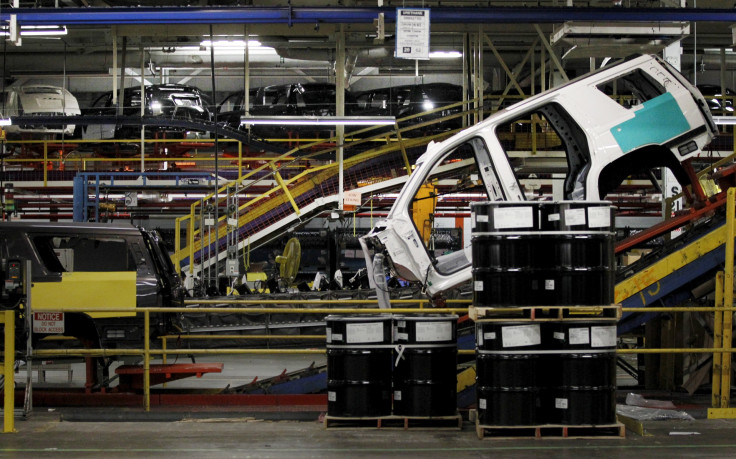US Manufacturing Shows Signs Of Stability As Export Orders Rise

U.S. factory activity expanded at a more moderate pace in April due in part to a slowdown in new orders, but a rise in export orders to a near 1-1/2-year high and signs an inventory overhang drag was fading offered hope for the manufacturing sector.
Another report on Monday showed construction spending rose to an 8-1/2-year high in March and the prior month's outlays were revised higher, implying a small upward revision to the first quarter's pedestrian growth rate.
"Manufacturing is moving forward but we have the tortoise, not the hare in this race," said Joel Naroff, chief economist at Naroff Economic Advisors in Holland, Pennsylvania.
The Institute for Supply Management (ISM) said its index of national factory activity slipped to 50.8 last month from a reading of 51.8 in March. Despite the fall, April marked the second straight month of expansion and was also the second highest reading in the last eight months.
A reading above 50 indicates expansion in the manufacturing sector, which accounts for 12 percent of the U.S. economy. Economists had forecast the ISM manufacturing index dipping to 51.4 last month.
Manufacturing has been hurt by weak export growth stemming from a strong dollar and soft global demand.
The sector has also been hammered by relentless aggressive spending cuts in the energy sector in the aftermath of last year's plunge in oil prices. Efforts by businesses to reduce an inventory overhang have resulted in fewer factory orders, leading to further erosion in the manufacturing sector.
U.S. stocks were trading higher on Monday, while prices for U.S. Treasuries fell. The dollar .DXY weakened against a basket of currencies.
Q2 GDP Rebound Expected
Manufacturing last month was held back by a drop in the gauge of orders received by factories, which fell 2.5 points to 55.8 percent. Factory production also fell last month.
A 10th consecutive monthly decline in inventories restrained manufacturing activity in April, but represented good news for future factory output. ISM said customer inventories hit a nine-month low last month and were now regarded as being "too low."
A gauge of export orders rose to its highest level since November 2014, suggesting a pickup in global demand. It also indicates the dollar's depreciation this year against the currencies of the United States' main trading partners is starting to boost exports.
"This makes us hopeful that manufacturing has turned the corner and that the economy will pick up in the second quarter," said Chris Rupkey, chief financial economist at MUFG Union Bank, in New York.
Economic growth slowed to a 0.5 percent annualized rate in the first quarter. Given a fairly robust labor market, which is expected to boost sluggish consumer spending, economists expect gross domestic product growth to rebound in the second quarter.
The economy grew at a 1.4 percent rate in the fourth quarter.
In a separate report, the Commerce Department said construction spending increased 0.3 percent in March to its highest level since October 2007, following an upwardly revised 1.0 percent jump in February.
Construction outlays were previously reported to have declined 0.5 percent in February.
The revised February construction spending figures were much higher those used in the government's advance first-quarter GDP estimate published last week. Economists expect GDP growth for the first three months of the year will be revised up to a 0.7 percent rate.
"This morning's data indicate that residential and nonresidential structures investment will both likely be revised higher in the second estimate," said Jesse Hurwitz, an economist at Barclays in New York.
Construction spending in March was supported by a 1.1 percent surge in private construction, which hit its highest level since October 2007. Public construction spending fell 1.9 percent in March.
© Copyright Thomson Reuters 2024. All rights reserved.





















